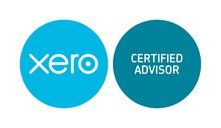2016 Federal Budget Proposed Superannuation Changes
The following are the main proposed changes to superannuation made in the 2016 Federal Budget:
Removal of aged-based contribution rules
From 1 July 2017, it will be easier for people aged 65 to 74 to contribute to super by removing the current aged-based contribution rules as follows:
- If you are aged 65 to 74, you will no longer need to meet a work test before making voluntary or non-concessional (after-tax) contributions
- From 1 July 2017, you will also be able to make contributions to a spouse aged under 75 without the need for your spouse to meet a work test.
In other words you will have the ability to contribute into your super account from age 65 to 74 even if your have retired.
Tax offsets for spouse contributions
From 1 July 2017, if your partner earns under $37,000 p.a. and you make a contribution to their super of at least $3,000, you may be eligible for a maximum tax offset of up to $540 ($3,000 x 18%). The offset reduces as your partner's income increases above $37,000 p.a. and completely phases out at $40,000 p.a.
Currently, the maximum offset of $540 ($3,000 x 18%) is payable if your partner's annual income is $10,800 or under and you make a super contribution of $3,000, or more. It phases out when your partner's income reaches $13,800.
Your partner can be either married or de facto.
Annual cap on concessional (before tax) contributions
The annual cap on concessional (before-tax) contributions will reduce to $25,000 for everyone from 1 July 2017. This applies to both Superannuation Guarantee and salary sacrifice contributions, which means the total of these two types of contributions will count towards the cap.
Catch-up concessional contributions
New catch-up provisions will allow people with account balances up to $500,000 to make 'catch-up' concessional superannuation contributions. This also applies to defined benefit schemes.
If you have a balance less than $500,000, you can roll over unused concessional contribution amounts under the annual cap of $25,000 for up to five years. This means if you make no contributions for three years, in the fourth year your concessional contributions cap is $100,000. Your annual cap cannot exceed $125,000 because caps cannot be carried forward for more than five prior years.
Your unused annual concessional contribution cap amounts accrue from 1 July 2017.
The annual concessional contributions caps are currently $30,000 for people under the age of 50, and $35,000 for people aged 50 or over during the year.
Transition to retirement income streams
From 1 July 2017, if you are in a transition to retirement income stream (TRIS) earnings on the assets supporting the TRIS will generally be taxed at 15%, regardless of when you started the account.
Income produced by assets supporting a TRIS is currently exempt from income tax.
Introduction of a transfer balance cap of $1.6 million
From 1 July 2017, a $1.6 million cap will be introduced on the total amount of superannuation that can be transferred into a tax-free retirement account:
- The cap will be indexed in $100,000 increments in line with the Consumer Price Index, similar to the treatment of the age pension assets threshold.
- Superannuation savings accumulated over the cap can remain in an accumulation account, where the earnings will generally be taxed at 15%.
- A proportionate method measuring the percentage of the cap previously used, will determine how much remaining cap you have available at any point in time. For example, if you have previously used up 75% of your cap, you will have access to 25% of the current (indexed) cap.
- Subsequent fluctuations in retirement accounts due to earnings growth or pension payments will not be considered when calculating the unused cap.
If you breach the cap, you will be subject to a tax on both the amount in excess of the cap and the earnings on the excess amount.
If your retirement account balance is over $1.6 million at 1 July 2017, you will need to either:
- transfer the excess back into an accumulation superannuation account, or
- withdraw the excess amount from your retirement account.
Additional contributions tax on higher-income earners
Currently, people with an annual income of over $300,000 pay an additional 15% tax on the amount of concessional contributions that push the income above the $300,000 threshold. This tax is known as Division 293 tax and is calculated by the ATO when your tax return is completed. From 1 July 2017, this threshold will be reduced to $250,000.
For example, currently, if you have a taxable income of $280,000-which has been reduced by salary sacrifice contributions of $25,000-you will pay an additional 15% tax on contributions of $5,000, which is the portion of the contribution above $300,000. From 1 July 2017, you will pay the additional 15% tax on the entire $25,000 as all the concessional contributions will be above the new threshold of $250,000.
Introduction of a lifetime non-concessional cap
From Budget night on 3 May 2016, there has been an introduction of a $500,000 lifetime cap on non-concessional (after-tax) contributions. This will take into account all non-concessional contributions made since 1 July 2007.
The cap will apply to people aged up to age 75, and it will be indexed in $50,000 increments in line with wages.
Currently, you can make non-concessional contributions of $180,000 a year (or $540,000 every three years if you are under 65).
If you have exceeded the cap prior to 3 May 2016, you will be deemed to have used up your lifetime cap but you will not be required to take the excess out of the superannuation system.
- If you make contributions that cause you to exceed your cap, you will be notified by the ATO to withdraw the excess from your account.
- If you choose not to withdraw the excess, you will be subject to the current penalty arrangements for excess contributions.
- If you have already made non-concessional contributions up to $500,000 since 1 July 2007, you will not be able to make additional contributions, unless indexation increases the cap.
If you are over 65 and were previously restricted to $180,000 in annual non-concessional contributions, you may have additional flexibility depending on contributions made since 1 July 2007.
Contributions for people who earn only some of their income from salary and wages
From 1 July 2017, anyone up to age 75 will be able to claim a tax deduction for personal contributions regardless of your work situation – up to the new concessional contribution cap of $25,000, subject to 15% contributions tax. This is particularly important for self-employed people.
If you are a member of a defined benefit scheme, you will not be eligible to claim an income tax deduction for contributions to these funds. However, you may claim a deduction if you make a contribution to another non-defined benefit fund.
Changes to defined benefit schemes
If you are a member of a defined benefit fund, the Government has also announced changes which broadly replicate the proposed $1.6 million transfer balance cap and the $500,000 lifetime cap for defined benefit funds.
It is important to note that the changes outlined in the Federal Budget depend on the passing of legislation. To find out more or for an explanation on how these proposed changes may affect you, contact the team at Envision Business & Wealth Advisors.






